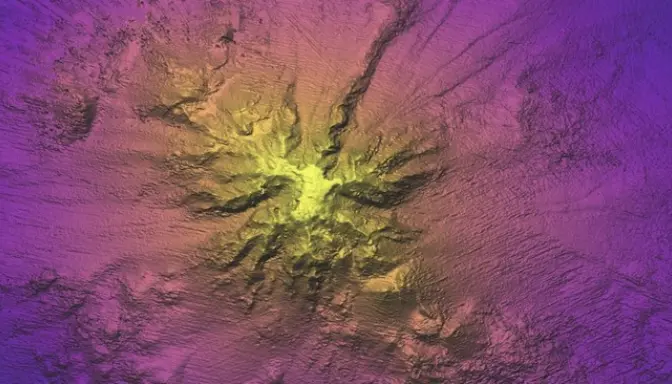Diksia.com - Researchers from the Schmidt Ocean Institute in California have recently identified an underwater mountain towering over 3,000 meters in the Pacific Ocean. This colossal formation dwarfs Dubai’s Burj Khalifa, which stands at 830 meters, by a factor of four.
Situated 1,448 kilometers off the coast of Chile, this underwater volcano reaches a height of 3,109 meters. It is part of a submerged mountain range that serves as a habitat for a unique array of marine life, including ancient coral reefs, sponge gardens, and rare species such as a previously unfilmed squid.
A team led by the Schmidt Ocean Institute embarked on a 28-day expedition aboard the research vessel R/V Falkor, concluding their journey at the end of August. The researchers mapped the mountain using sonar systems deployed beneath the ship.
“The sound waves are sent downward and bounce back to the surface, and we measure the time it takes for them to return and then calculate it. This process provides us with an exceptionally clear picture of the underwater topography,” said Jyotika Virmani, the institute’s executive director, as reported by CNN on September 4.
Virmani emphasized the significance of this discovery, noting, “Currently, only about 26 percent of the ocean floor has been mapped with this level of resolution. Yet, the ocean floor covers 71 percent of our planet’s surface.”
Oceanographers estimate there are at least 100,000 seamounts worldwide exceeding 1,000 meters in height. These underwater peaks are crucial for supporting diverse marine ecosystems.
The newly discovered seamount surpasses Greece’s Mount Olympus, which stands at 2,917 meters, is shorter than Japan’s Mount Fuji at 3,776 meters, and is nearly four times taller than the 830-meter Burj Khalifa.
In addition to mapping the seamount, the researchers captured the first footage of a living Promachoteuthis squid. This genus is so elusive that only three species have been described from a handful of specimens collected, some dating back to the late 1800s.
Furthermore, the Schmidt Ocean Institute documented the Casper octopus, marking the first sighting of this species in the South Pacific. The expedition also recorded two rare Bathyphysa siphonophores, commonly known as flying spaghetti monsters.






